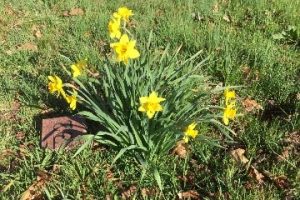
In 2012 a severe storm with 90-mile-per hour winds blew through Benedict, toppling an oak tree at Serenity Farm. Thirty years before, a human skull was discovered in the same area. This is how a lost and forgotten African American burial ground came to light. Dr. Julie Schablitsky, an archaeologist with the State Highway Administration, was working nearby searching for evidence of the War of 1812 British encampment. Dr. Schablitsky was called in to investigate.
For Dr. Schablitsky, including the local descendant community was imperative if the project was to go forward. She reached out to the Charles County African American Heritage Society to represent the descendant community in decision-making. Mrs. Louise Webb, Society President, and Mrs. Dorothea Smith, Society secretary, worked with the team of landowners, historians, archaeologists, and forensic anthropologists to discover and tell the story of the burial ground.
The St. Nicholas Creek Cemetery is the final resting place for at least 23 enslaved African Americans — nine adults, six children, and eight infants. Forensic and artifact analysis allowed archaeologists to date the burial ground between ca.1790 and ca.1810, to research the health of the people buried there, and to create a likeness of a young, enslaved man based on his interred remains. The location and dates of the burials told researchers that people interred there were enslaved by the Henry Arundel Smith family.
Additional Resources
View the documentary “Remembered by the Wind,” created in partnership with the Farm Heritage Conservancy, director Joe Habraken and farm co-owner Frank Robinson, Jr.
20,000 year History of People and Plants in Maryland, The Burial Site at Serenity Farm, JPP app.